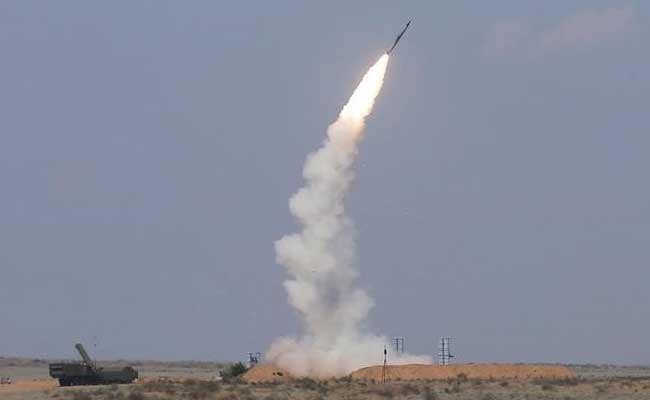
Russia completed the delivery of the S-300 air defense system to Iran in 2016. (representative)
Iran’s Isfahan province was hit by drone and missile attacks last week. The attack reportedly originated from Israel and targeted the area where Iran’s nuclear facility and air defense systems are located.
US news agencies said Israel had carried out the attacks, while the Jewish state neither agreed nor denied carrying out the attacks. The blasts come a week after Iran launched a sustained drone, cruise and ballistic missile attack on its arch-rival Israel in the region. The targeted attacks from Tehran were unprecedented and came after tensions reached their peak.
The New York Times and the BBC have analyzed satellite images of the area that was hit by the drone and a missile, allegedly launched from a warplane. Satellite images show a Russian-origin S-300 surface-air anti-ballistic missile defense system battery located northeast of Isfan International Airport.

Google Earth image from December 2021
Satellite images accessed by the BBC on April 15 show the S-300 defense system located at the secret facility. The latest image on Google Earth shows the site empty, with no sign of the S-300 missile defense system. The Natanz nuclear facility is located north of the attack site.
The BBC has reported based on its analysis that the system includes several vehicles equipped with radar, unique missile launchers and other equipment. The drones and missiles reportedly hit the system, implying that the Israeli weapons managed to evade the Iranian air defense system and went undetected and hit the area equipped with an anti-ballistic missile defense system.
Two Iranian officials said Iran’s military did not detect anything entering Iran’s airspace on Friday, including drones, missiles and aircraft, the New York Times reported. The assessment is backed by Iran’s state media agency IRNA, which said there was no missile attack and Iran’s air defense system was not activated. Satellite images reviewed by the BBC and The New York Times showed the facility damaged.
Umbra synthetic aperture radar imagery acquired 0648Z 19APR2024 showed evidence of damage to an Iranian S-300PMU2 strategic surface-to-air missile battery in Isfahan from 15APR2024. A possible damaged 30N6E target engagement radar was still visible in images on the radar… pic.twitter.com/eqMFTanPOH
— Chris Biggers (@CSBiggers) April 19, 2024
The BBC said the radar of the S-300 defense system was damaged but the missile launchers were intact. The fire control radar guides the missile to the target and is an important element in the system. “The image clearly shows that the system’s engagement radar, which guides surface-to-air missiles, has been destroyed,” said Iran International, a news agency critical of the regime. Farzeen Nadimi, a senior fellow at the Washington Institute, told the agency.
EXCLUSIVE: Detailed satellite imagery before and after an Israeli attack on defense systems at Isfahan’s 8th Shekari base. pic.twitter.com/Ta8LwskLpl
– Fardad Farahzad Fardad Farahzad (@Fardad Farahzad) April 21, 2024
The extent of the damage is still unknown and what weapons were allegedly used by Israel remains unclear as both sides deny the claims. However, the New York Times quoted Western officials as saying that Israel’s attack was calculated to send a message to Iran that it could bypass its defenses undetected, adding that neither the missile nor its The plane that was piloted entered Jordanian airspace, Western officials said.
Russia completed the delivery of the S-300 air defense system to Iran in 2016 after years of negotiations. The supply of one of the most powerful air defense systems raised concerns in Israel. In 2010, Russia was forced to cancel the deal with Iran due to pressure from the West.






